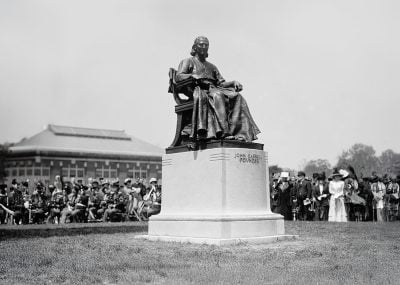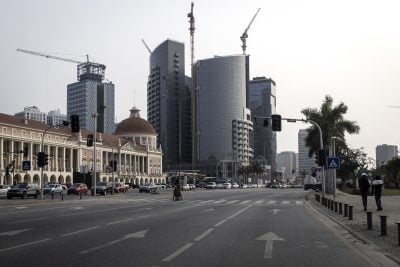Lewis outlines how the traders would search for the means to shave milliseconds off the time their computers could execute trades. This might be achieved by placing their data centres closest to the stock markets or even in investing in new fibre optic lines.
The author describes one such 827-mile fibre-optic line. It was built by Spread Networks from Chicago to New York, at a cost of $300m and built in absolute secrecy. Not even the men digging the trenches (which only deviated from an absolutely straight line where necessary – even going through the granite Allegheny Mountains) knew the purpose of the cable. And where a straight line was not possible, microwave towers were used to save those valuable nanoseconds that might have been lost had the cable taken a more circuitous path.
What this cable and microwave allowed was for the traders’ computers in Chicago to use the new stock markets that were springing up in the East, and the microsecond (millionths of a second) competitive edge that the speed of the new fibre and microwave connectivity offered.
And the price of this high-speed connectivity? Lewis puts the up-front cost to the 200 traders, who signed up for Spread Networks new fibre cable at $14m each, (in other words $2.8bn). The traders still had to buy and maintain their own signal amplifiers housed in 13 amp sites along its length.
And what the traders’ computers were searching for were minute anomalies in stock prices. For example, say an oil company’s stock was moving out of kilter with its peers in that particular industry sector, and for no particularly good reason, there is a high probability that that company’s stock price would come back into an alignment with the others – and this would be recognised by the computers that would automatically trade in buying the stock.
However, if enough investors try to do this, the advantage of spotting the price anomaly is quickly lost. This is where the high-speed nature of the trading comes in. Computers execute these trades at lightning speed, trying to beat the other traders’ algorithms to the best trade.
Then of course, again automatically, the computer would sell as that alignment corrective had been completed. It was, and is, a devilishly complex yet hugely profitable procedure, made simple by computing power and speed of execution.
Speed was also a hugely valuable when it came to ‘front-running’. Lewis elucidates how front-running operates in this way: “A front-runner sells you 100 shares of some stock to discover you are a buyer and then turns round and buys everything in sight, causing the stock to pop higher (or the opposite, if you happen to be a seller).”
Choppiness creates dark pools
According to the author, this created a new “choppiness” in US markets “that spread to other financial markets as they too embraced high-frequency traders”. The consequence of this new trend was that investors found it increasing difficult to buy and sell big chunks of stock in one go.
“Their frustration with the public stock exchanges,’ Lewis notes, “had led the big Wall Street banks to create private exchanges; dark pools.
“By the middle of 2011, roughly 30% of all stock market trades occurred off the public exchanges, most of them in dark pools which today number more than 40 in the US. The appeal of these dark pools – said the Wall Street banks – was that investors could expose their big stock market orders without fear that those orders would be exploited [by the front runners].”
In essence, Lewis warns that there is the danger (perhaps even the reality] that high-frequency trading means that the US stock-market is rigged. But, as Katsuyama tells the author, his research found that the whole history of the US stock market is one of traders taking opportunities when they see anomalies – and high-frequency trading is no different from what has gone before. On the other hand, the danger is that high-frequency trading now accounts for 65% of US stock market volumes.
“What had been the world’s most public, most democratic, financial market had become, in spirit, something more like a private viewing of a stolen work of art,” Lewis insists.
But is high-frequency trading ethical or strictly legal? That is the question but, as they say, the jury is still out. For, on the very day that this book was published, the US’s Federal Bureau of Investigation announced that it was investigating the practice of high-frequency trading, a division of the US investment industry that is estimated to be worth between $10bn to $20bn.
Want to continue reading? Subscribe today.
You've read all your free articles for this month! Subscribe now to enjoy full access to our content.
Digital Monthly
£8.00 / month
Receive full unlimited access to our articles, opinions, podcasts and more.
Digital Yearly
£70.00 / year
Our best value offer - save £26 and gain access to all of our digital content for an entire year!

 Sign in with Google
Sign in with Google 


